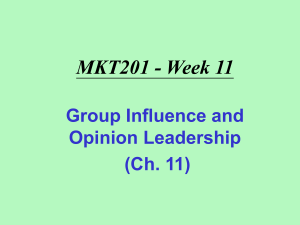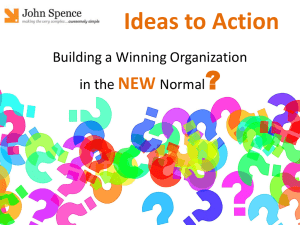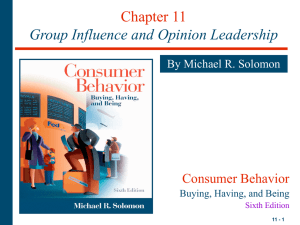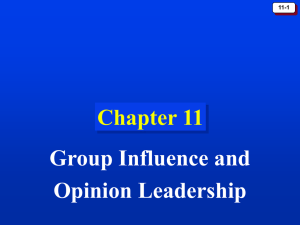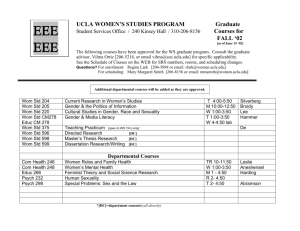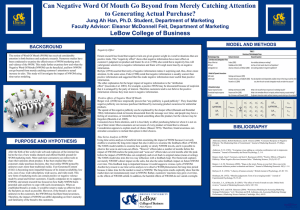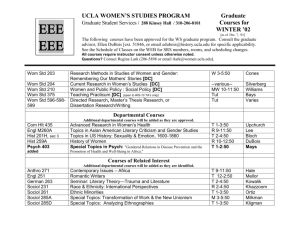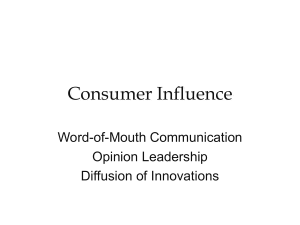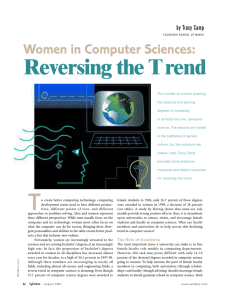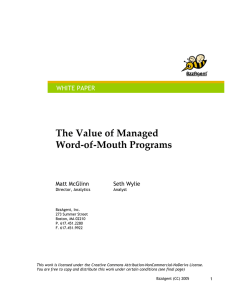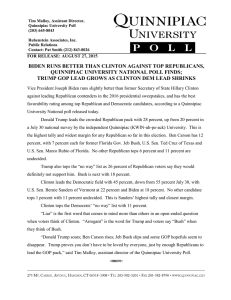Reference Groups
advertisement
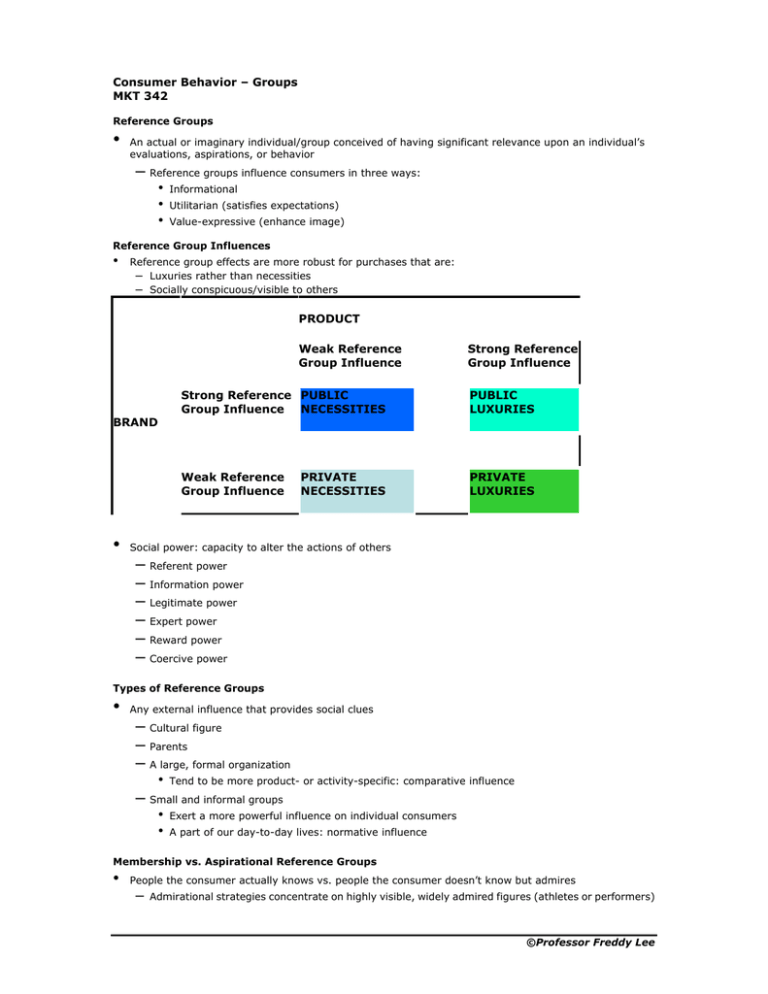
Consumer Behavior – Groups MKT 342 Reference Groups • An actual or imaginary individual/group conceived of having significant relevance upon an individual’s evaluations, aspirations, or behavior – Reference groups influence consumers in three ways: • • • Informational Utilitarian (satisfies expectations) Value-expressive (enhance image) Reference Group Influences • Reference group effects are more robust for purchases that are: – Luxuries rather than necessities – Socially conspicuous/visible to others PRODUCT Weak Reference Group Influence BRAND • Strong Reference Group Influence Strong Reference PUBLIC Group Influence NECESSITIES PUBLIC LUXURIES Weak Reference Group Influence PRIVATE LUXURIES PRIVATE NECESSITIES Social power: capacity to alter the actions of others – Referent power – Information power – Legitimate power – Expert power – Reward power – Coercive power Types of Reference Groups • Any external influence that provides social clues – Cultural figure – Parents – A large, formal organization • Tend to be more product- or activity-specific: comparative influence – Small and informal groups • • Exert a more powerful influence on individual consumers A part of our day-to-day lives: normative influence Membership vs. Aspirational Reference Groups • People the consumer actually knows vs. people the consumer doesn’t know but admires – Admirational strategies concentrate on highly visible, widely admired figures (athletes or performers) ©Professor Freddy Lee – Membership strategies focus on “ordinary” people whose consumption provides informational social influence • Propinquity, mere exposure, and group cohesiveness Positive vs. Negative Reference Groups • Reference groups may exert either a positive or negative influence on consumption behaviors – Avoidance groups: motivation to distance oneself from other people/groups – Marketing: ads with undesirable people using competitor’s product Consumers Do It in Groups • Deindividuation – Binge drinking at college parties • Social loafing – We tend to tip less when eating in groups • Risky shift – Diffusion of responsibility – Value hypothesis • • Decision polarization Home shopping parties – Tupperware and Botox parties – Informational and normative social influence – Deindividuation – Risky shift Conformity • Most people tend to follow society’s expectations regarding how to look/act – Change in beliefs/actions toward societal norms • Appropriate clothing/personal items, gift-giving, sex roles, and personal hygiene Factors Influencing Conformity • • Cultural pressures Fear of deviance – Sanctions against “different” behavior • Commitment to group membership – Principle of least interest • • Group unanimity, size, expertise Susceptibility to interpersonal influence – Role relaxed Social Comparison • “How’m I doing?” – We look to others’ behavior to inform us about reality – Occurs as way to increase stability of one’s self-evaluation (sans physical evidence) • Tastes in music and art – We tend to choose co-oriented peer when performing social comparison Resisting Conformity ©Professor Freddy Lee • Independence vs. anticonformity – “Marching to own drummer” vs. being aware of what is expected (and not doing it) • Reactance – Negative emotional state when we are deprived of our freedom of choice – Censored books, TV shows, music lyrics Word-of-Mouth Communication • WOM: product information transmitted by individuals to individuals – – – – – • More reliable/trustworthy form of marketing Backed up by social pressure to conform Influences two-thirds of all sales of goods We rely upon WOM in later stages of evaluation and adoption WOM is powerful when we are unfamiliar with product category Product-related conversation factors: – High involvement with product (pleasure) – Knowledgeable about product (impressing others) – Genuine concern for others (avoid wasting money) Negative WOM and Power of Rumors • We weigh negative WOM more heavily than we do positive comments! – Negative WOM is easy to spread, especially online – Determined detractors • Discussion: What is the best way for a company to deal with determined detractors? – Information/rumor distortion • Assimilation, leveling, and sharpening Virtual Communities • A collection of people who share their love of a product in online interactions – – – – • Multi-user dungeons (MUD) Rooms (IRC), rings, and lists Boards Blogs/blogosphere Great potential for abuse via untrustworthy members – Amazon.com lawsuit (charging publishers to post positive reviews of Web site) Types of Web Surfers Guerrilla Marketing • Promotional strategies that use unconventional locations and intensive WOM to push products – Recruiting legions of real consumers for street theater ©Professor Freddy Lee • • • Hip-hop “mix tapes”/street teams P&G’s Tremor Kayem Foods’ Great Sausage Fanout – Brand ambassadors Social Networking • Web sites letting members post information about themselves and make contact with similar others – Share interests, opinions, business contacts Opinion Leadership • • We don’t usually ask just anyone for advice about purchases! We most likely seek advice from someone who knows a lot about a product – Opinion leaders frequently influence other’s attitudes/behaviors • E-fluential advice Reasons to Seek Advice from Opinion Leaders • • • • • Expertise • • Generalize opinion leader vs. monomorphic (specialist)/polymorphic (generalist) experts • • Innovative communicators Unbiased knowledge power Highly interconnected in communities (social standing) Referent power/homophily Hands-on product experience (absorb risk) Although opinion leaders exist for multiple product categories, expertise tends to overlap across similar categories – It is rare to find a generalized opinion leader Opinion seekers – – More likely to talk about products with others and solicit others’ opinions Casual interaction prompted by situation The Surrogate Consumer • A marketing intermediary who is hired to provide input into purchase decisions – Interior decorators, stockbrokers, professional shoppers, college consultants – Consumer relinquishes control over decision-making functions • Marketers should not overlook influence of surrogates! Identifying Opinion Leaders • Many ads intend to reach influentials rather than average consumer – – – Local opinion leaders are harder to find Companies try to identify influentials in order to create WOM “ripple effect” Exploratory studies identify characteristics of opinion leaders for promotional strategies The Self-Designating Method • Most commonly used technique to identify opinion leaders… – Simply ask individuals whether they consider themselves to be opinion leaders – Method is easy to apply to large group of potential opinion leaders – View with skepticism…inflation or unawareness of own importance/influence • Alternative: key informants identify opinion leaders ©Professor Freddy Lee
